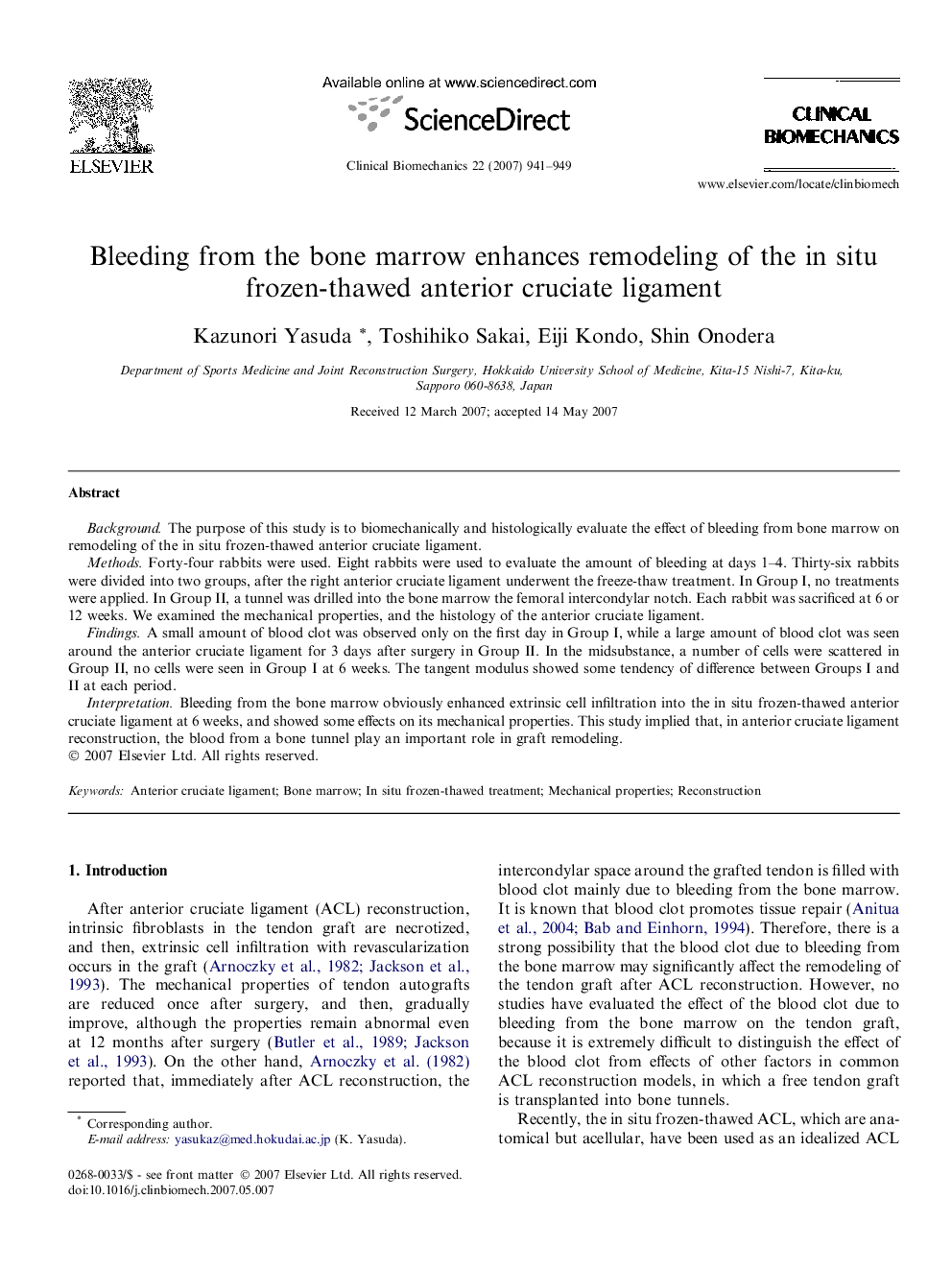| Article ID | Journal | Published Year | Pages | File Type |
|---|---|---|---|---|
| 4051762 | Clinical Biomechanics | 2007 | 9 Pages |
BackgroundThe purpose of this study is to biomechanically and histologically evaluate the effect of bleeding from bone marrow on remodeling of the in situ frozen-thawed anterior cruciate ligament.MethodsForty-four rabbits were used. Eight rabbits were used to evaluate the amount of bleeding at days 1–4. Thirty-six rabbits were divided into two groups, after the right anterior cruciate ligament underwent the freeze-thaw treatment. In Group I, no treatments were applied. In Group II, a tunnel was drilled into the bone marrow the femoral intercondylar notch. Each rabbit was sacrificed at 6 or 12 weeks. We examined the mechanical properties, and the histology of the anterior cruciate ligament.FindingsA small amount of blood clot was observed only on the first day in Group I, while a large amount of blood clot was seen around the anterior cruciate ligament for 3 days after surgery in Group II. In the midsubstance, a number of cells were scattered in Group II, no cells were seen in Group I at 6 weeks. The tangent modulus showed some tendency of difference between Groups I and II at each period.InterpretationBleeding from the bone marrow obviously enhanced extrinsic cell infiltration into the in situ frozen-thawed anterior cruciate ligament at 6 weeks, and showed some effects on its mechanical properties. This study implied that, in anterior cruciate ligament reconstruction, the blood from a bone tunnel play an important role in graft remodeling.
